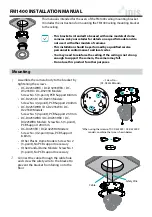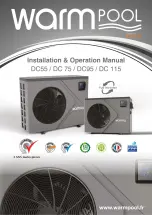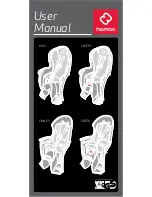
Installation and Commissioning Guide
Variable Capacity Commercial
5
Installation and Commissioning Guide- Package Ducted Variable Capacity Commercial
Doc. Part No. 0525-076 Ver. 3 210414
• Installer must incorporate a means of electrical disconnection (isolator) in the sub mains fixed wiring in accordance
with the latest edition of the AS/NZS 3000 (also known as Australian Wiring Rules).
• Secure the power cords and control cables that goes in/out the unit. Use the cable ties provided in the control box.
*Qualifications required will be appropriate Electrical, Refrigeration and Refrigerant Handling License and Training
dependent on local State/Territory regulations.
DANGER
Hazardous Voltage - Risk of Electrocution.
TURN-OFF the power from main isolator before proceeding with any service work of the unit. Observe proper LOCK-OUT/
TAG-OUT (LOTO) procedures for electrical appliances in order to prevent accidental switching-on of the power supply.
WARNING
EC Motors are fitted with high power capacitors and can have dangerous residual voltages at motor terminals after power
has been isolated. Wait at least 5 minutes after power isolation and test for any residual voltage before beginning service
work.
CAUTION
Beware of Rotating Fans !
Ensure that indoor and outdoor fans are isolated and have come to a complete stand still before servicing the equipment.
Beware of pinch point and sharp edges which can cause cutting injury. Secure the fans against accidental contact.
Always wear appropriate PPE and remove any dangling jewellery and protect long hair by wearing a cap. Ensure that no
loose clothing can be caught / entangled in moving parts.
VISUAL INSPECTION AND WORK ASSESSMENT
Work areas and conditions must first be assessed and evaluated for any potential hazardous conditions. It is also important
to be familiar with the unit parts and components before proceeding with any service task.
04. Installation Information
All service technicians handling refrigerant must be licensed to handle refrigerant gases.
Recover and Recycle Refrigerants
Never release refrigerant to the atmosphere! It is an offence in Australia to do so. Always recover, recycle and reuse
refrigerants. When removing from the system, properly contain and identify refrigerants in its dedicated container for
proper disposal and/or storage. Always consider the recycle or reclaim requirements of the refrigerant before beginning
the recovery procedures. Obtain a chemical analysis of the refrigerant if necessary. Refer recovered refrigerant and
acceptable refrigerant quality to existing standards and regulations.
Refrigerant Handling and Safety
Consult the refrigerant manufacturer’s safety data sheet (SDS) for information on proper handling and to fully
understand health, safety, storage and disposal requirements. Use the approved containment vessels and refer to
appropriate safety standards. Comply with all applicable transportation standards when shipping refrigerant containers.
Service Equipment and Recovery Procedures
Always use refrigerant reclaiming equipment in order to minimise refrigerant emissions. Use equipment and methods
which will pull the lowest possible system vacuum while recovering and condensing refrigerant. Equipment capable of
pulling a vacuum of less than 500 microns is required.
Содержание PKV160T
Страница 57: ...THIS PAGE WAS INTENTIONALLY LEFT BLANK ...
Страница 58: ...THIS PAGE WAS INTENTIONALLY LEFT BLANK ...
Страница 59: ...THIS PAGE WAS INTENTIONALLY LEFT BLANK ...






































